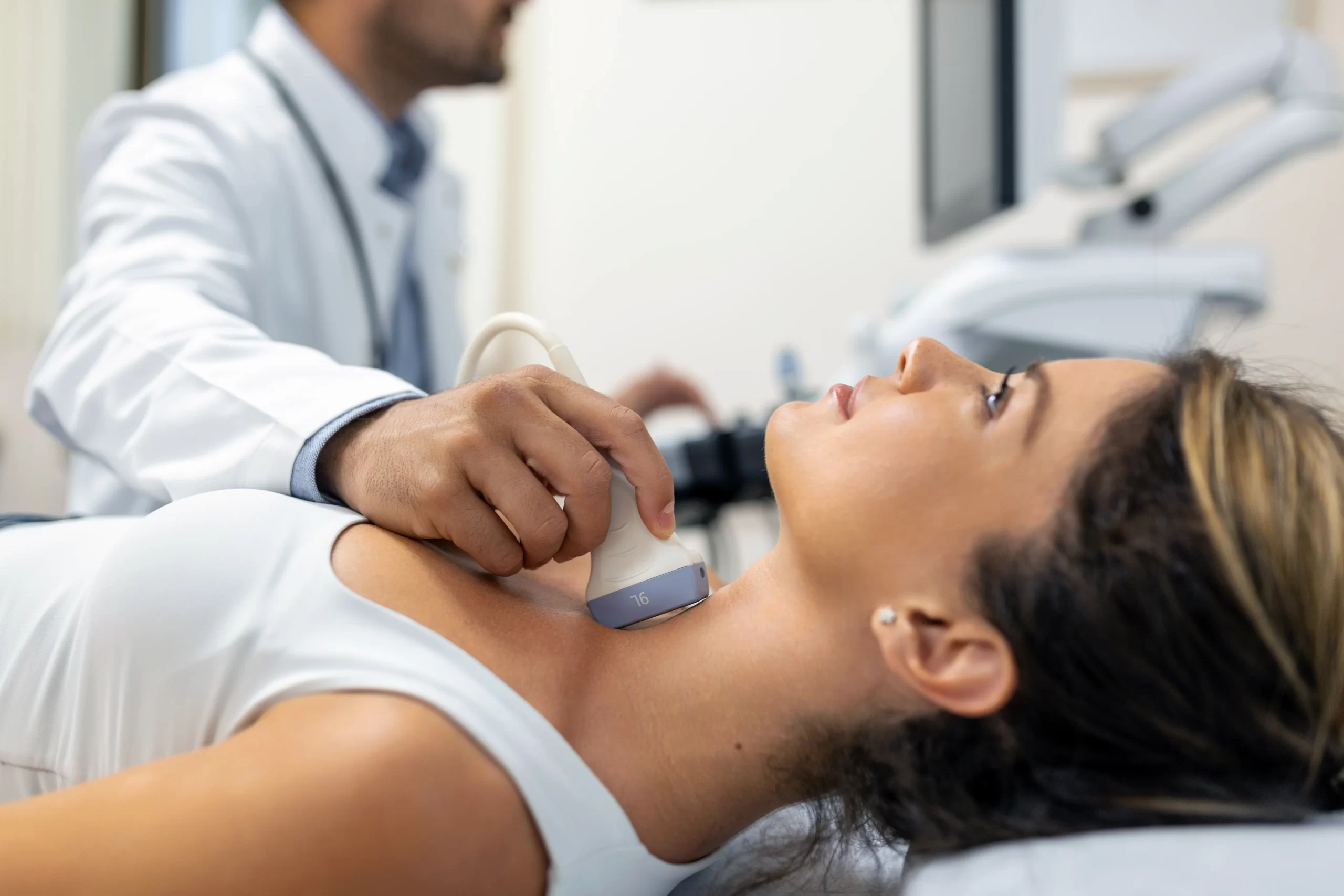Color Doppler is a diagnostic method based on visualizing the direction and speed of blood flow within vascular structures. By using color coding on the image, the direction of the intravascular flow can be easily distinguished. This allows physicians to quickly evaluate parameters such as vessel patency, the presence of clots, and circulation patterns. It is frequently preferred in the early diagnosis of cardiovascular-related disorders.
Color Doppler, being a non-invasive method, maintains patient comfort while enabling detailed vascular mapping. It can be applied during the examination of vessels located in the abdomen, neck, legs, and arms. It is also used as an auxiliary imaging method in many areas such as thyroid, liver, kidney, and pregnancy follow-up. The data obtained from the procedure provide objective findings regarding the pattern of blood flow and potential obstruction risks.
What is Color Doppler?
The method used to visually evaluate blood flow in vascular structures is an advanced vascular imaging technique. During diagnostic examination, the direction and speed of moving blood flow are displayed on the screen using different colors. In this way, vessel patency, flow patterns, and possible obstructions are easily analyzed.
Doppler ultrasound is a fundamental imaging method that provides physicians with fast and accurate results in the diagnosis of circulatory system diseases. Since the procedure can be performed painlessly, patient comfort is preserved while detailed diagnostic data are obtained.

Doppler examination plays an important role in detecting abnormalities in vascular structures. It is frequently preferred for assessing conditions in which venous flow is impaired, such as venous insufficiency. This method reveals whether arterial and venous structures are functioning properly. Conditions such as intravascular clot formation, narrowing, or reflux can thus be examined in detail.
The main technical points of the process are as follows:
- High-frequency sound waves allow the direction and speed of intravascular flow to be displayed in color on the screen.
- The ultrasound device used provides clear images of soft tissues and the vascular system.
- The examination identifies the direction and speed of blood flow, as well as potential narrowing within the vessels.
- The data obtained help detect possible obstructions or circulatory disorders in the vascular structure at an early stage.
From a medical standpoint, the usage areas of Doppler ultrasound are quite broad. In addition to heart and vascular diseases, it provides important information for the evaluation of the liver, kidneys, thyroid, and pregnancy processes. During pregnancy, it helps obtain reliable data about the baby’s and placenta’s circulation. It may also be applied to determine the causes of circulatory disorders in the legs. The results are evaluated by the physician together with the patient’s clinical condition and laboratory findings.
Color Doppler ultrasonography is an examination method based on scientific principles and physical interactions. Its non-invasive nature, short application time, and wide range of use make it an important tool in the medical field.
Color Doppler Ultrasound
This vascular imaging method is an advanced diagnostic technique used to evaluate the functioning of the circulatory system. The direction, speed, and density of blood flow within the vessels are visualized using a color-mapping principle.
The data obtained during the examination reveal vessel patency, possible narrowing, and clot risk. The method provides reliable information for assessing cardiovascular health, detecting peripheral circulation disorders, and monitoring pregnancy.
The Doppler technique is based on the principle of sound waves reflecting off tissue surfaces. The direction and speed of blood flow in the vessels can thus be visually analyzed. The procedure is painless and does not involve radiation. It also plays an important role in evaluating organs such as the thyroid, kidneys, and liver.
The fundamental steps of this process are as follows:
In medical evaluations, color Doppler ultrasound findings are of great importance in the early diagnosis of diseases related to the circulatory system. Its advantage lies in enabling detailed vascular mapping in a short time. It also helps detect intravascular clots or flow irregularities.
Since the method does not require an invasive procedure, it offers a comfortable examination option for patients. The detailed assessment of visual data supports physicians in forming scientifically grounded treatment plans.
How is Doppler Performed?
The Doppler ultrasound procedure is quite simple and non-strenuous for the patient. Depending on the area to be imaged, the patient lies on the examination table in a supine or side position. Before the procedure, a special gel is applied to the skin to facilitate the transmission of sound waves. This gel increases the contact between the probe and the skin, allowing clearer images to be obtained.
The healthcare professional slowly moves the probe over the relevant vascular region, projecting the blood flow onto the screen. After the Doppler imaging, which typically takes 15–30 minutes, the patient can immediately return to daily life.
Following the procedure, the results are evaluated by the specialist doctor and conveyed to the patient as soon as possible.

Frequently Asked Questions
In which situations is Color Doppler requested?
Color Doppler may be requested for the evaluation of vascular blockage, suspected clots, varicose veins, monitoring placental circulation during pregnancy, and assessing stroke risk.
Is fasting required for Color Doppler?
Fasting is not necessary if superficial vessels such as those in the neck or legs are to be examined. However, if abdominal vessels are to be imaged, fasting may be requested based on the physician’s recommendation.
Who can undergo Color Doppler?
This method can be safely applied to all age groups. Since it does not involve surgical intervention, it can be comfortably preferred in children, pregnant women, and elderly individuals.
What can be diagnosed with Color Doppler?
Vascular narrowings, clots, venous insufficiency, varicose veins, intravascular tumors, and blood flow disorders to organs can be detected with this method.
Is Color Doppler harmful?
No, Color Doppler does not involve radiation. Since it operates with high-frequency sound waves, it can be safely used even during sensitive periods such as pregnancy.
What is the difference between Color Doppler ultrasound and regular ultrasound?
While regular ultrasound only displays tissue structure, Color Doppler analyzes both tissue structure and the direction and speed of blood flow within the vessels in color.
What should be considered before Color Doppler?
Generally, no special preparation is needed. However, if the abdominal region will be imaged, attention should be paid to fasting as per the physician’s recommendation.
To obtain reliable results in circulatory system evaluations and benefit from comprehensive imaging services, you may contact Denge Tıp.











